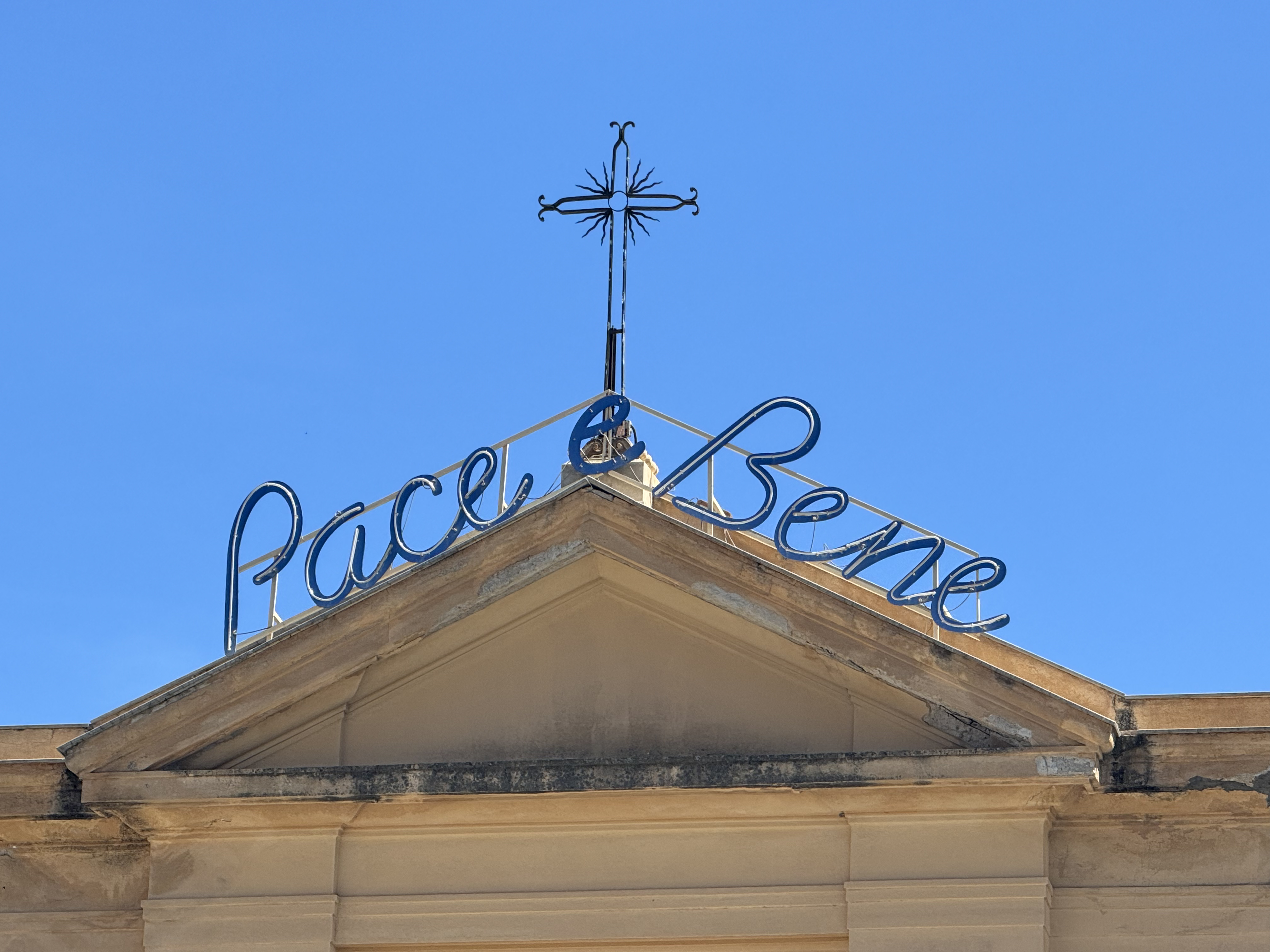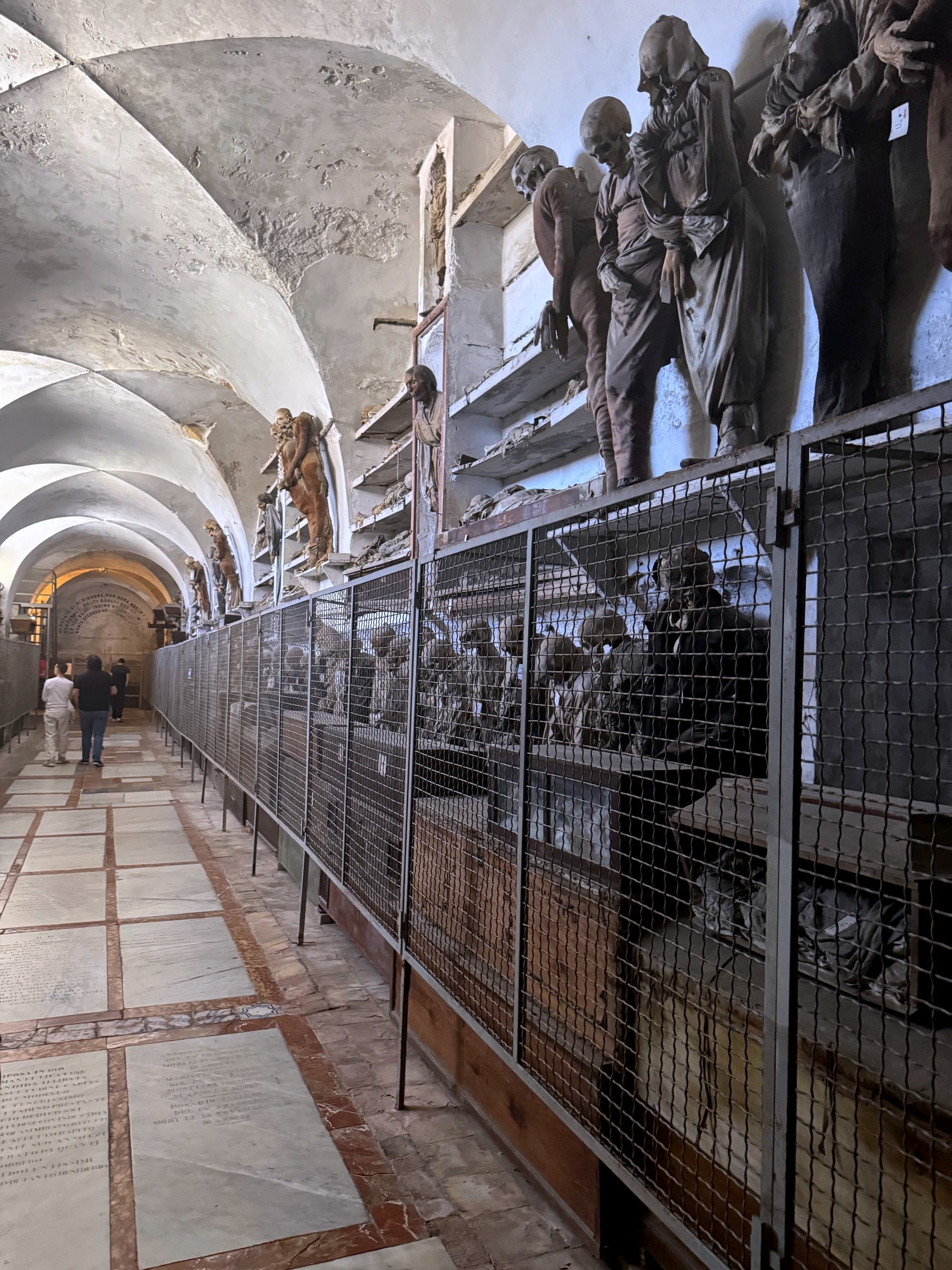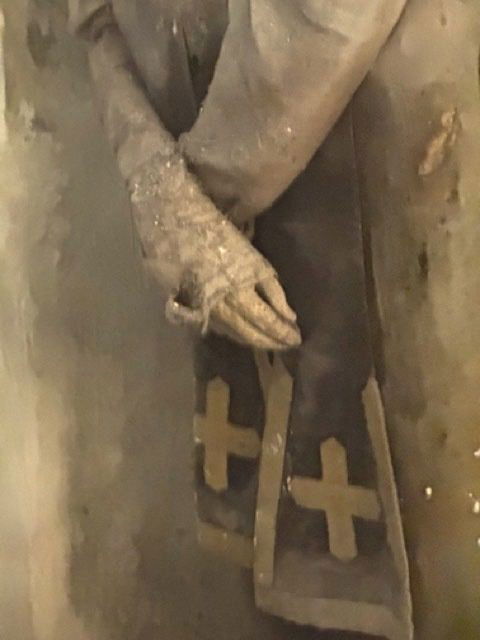Italy, Sicily: Capuchin Catacombs— Exploring the Dream of Eternal "Life" in Palermo
The images shown here are shared with deep respect for the space and those who rest within it.
Palermo. A city that always seems to pull me in with equal parts love and frustration. Last year, on my final morning before heading toward Agrigento, I heard about thousands of immaculately dressed mummies resting beneath a monastery.
Could such a thing be real?
That whisper of curiosity was enough to send me off on a last-minute quest. I made my way through the city’s winding alleys to the Church of Santa Maria della Pace, home to the Capuchin Monastery — and what I found underneath it truly stopped time.The Capuchin Catacombs of Palermo, first created in the late 1500s, began as a sacred space where monks preserved the bodies of their deceased brothers.
Over time, however, it became a mark of honour for Sicily’s noble families to bury their loved ones there — not hidden away, but displayed. Dressed. Remembered. Echoes in Stone.

“Pace e Bene” — Peace and Goodness. The words that greeted me above the Capuchin Monastery, before descending into the silence below— into the cool, dim catacombs. I entered a world unlike anything I have experienced. Narrow corridors and archways, lined with bodies — some upright, others resting in nooks, draped in robes, lace, even the faded elegance of top hats and silk gloves. The air was heavy, but not with fear. With reverence.More than 8,000 souls now rest in those halls, their clothing and posture still reflecting the time and status they once held in life.
The catacombs are thoughtfully divided into sections — men, women, children, virgins, monks, and professionals. I wandered slowly, letting each face, each fold of fabric, each still hand whisper its own quiet story.
They were not just remains. They were real memories. A flower garden where the flowers never die.
In Palermo, even in death, there was etiquette. According to local legend, families paid ongoing contributions to maintain their loved one’s position in the catacombs. If payments stopped, the body was respectfully moved to a shelf — not banished, but waiting, until the family could afford remembrance again. Preservation was both natural and intentional. Bodies were first placed in a room called the colatoio, where internal organs were removed and replaced with straw or bay leaves to encourage dehydration. The dry Sicilian air and the unique conditions of the catacombs did the rest. Some mummies remain remarkably intact. Others have faded into skeletal grace.A few monks still wear ropes around their waists. Their final prayer stitched in silence.



Rosalia Lombardo — Sleeping Beauty of Palermo
And then there was Rosalia. When I saw her, time seemed to pause. I stood frozen, unable to step away from this tiny Sleeping Beauty who had been resting for more than a hundred years. It felt as if she might stir at any moment — as if her soul had not quite left.
She rests in a glass coffin. A small ribbon tied in her hair. Her cheeks are soft, her eyelashes visible, her expression heartbreakingly serene.Rosalia Lombardo died in 1918, just shy of her second birthday, likely from pneumonia during the Spanish Flu pandemic. Her father, Mario Lombardo, apparently a rich merchant, shattered by grief — asked Professor Alfredo Salafia, a master embalmer and taxidermist, to preserve her forever. He did….
For nearly a century, no one knew how Salafia had achieved such stunning preservation. But in 2007, his personal notes revealed the secret: a delicate blend of formalin, glycerin, alcohol, salicylic acid, and zinc salts. It was likely injected into her small body through a single point, probably the femoral artery.The zinc is what gave her structure — keeping her cheeks rounded, her body still. But it is more than the science.
Something about Rosalia feels timeless.In certain light, it appears as though her eyes gently open. Scientists say it is a trick of refraction and humidity inside the sealed coffin.
But still… it leaves you breathless.
Why She Captivates Us
- Her skin remains unblemished.
- Her eyelashes cast the gentlest of shadows.
- Her tiny body lies in silence, but it is as if she’s merely sleeping.
- The illusion of movement — her eyes, the softness in her lips — invites you closer and stays with you long after you leave.
A Place to Visit with Heart
The catacombs are still open to the public, though photography is now prohibited — and I understand why. To be there is to stand in a place where the veil between life and death feels thinner. Visitors are not there to gape. They come quietly, moved by the stillness. Humbled.This was not a morbid experience. It was deeply human. A reflection not on how we die, but on how we love, grieve, and remember.
Sicilians have always kept death as part of life. I saw it again in Certosa Cemetery in Messina — a place that feels more like a museum of love than a graveyard. (You can read my blog about it: Enchanted Stones: A Journey Through Certosa Monumental Cemetery.)
In both places, I felt the same thing: that my soul was too small to hold all I was witnessing.

Final Thoughts
To walk among the dead in Palermo is not to fear death — it is to feel the weight of lives lived richly and remembered with devotion. It is to realise how little we know of the world’s hidden wonders. And it is to honour a culture that refused to let death erase identity — but instead preserved it, dressed it in Sunday best, and gave it space to remain part of the living world. I have not included any personal photographs here, out of respect for current photography restrictions in the catacombs. I have instead reached out to the authorities to request permission to incorporate specific images into this post. Until then, I walk that fine line between memory and reverence with only words.
Photo credit:
https://en.wikipedia.org/wiki/Catacombe_dei_Cappuccin
